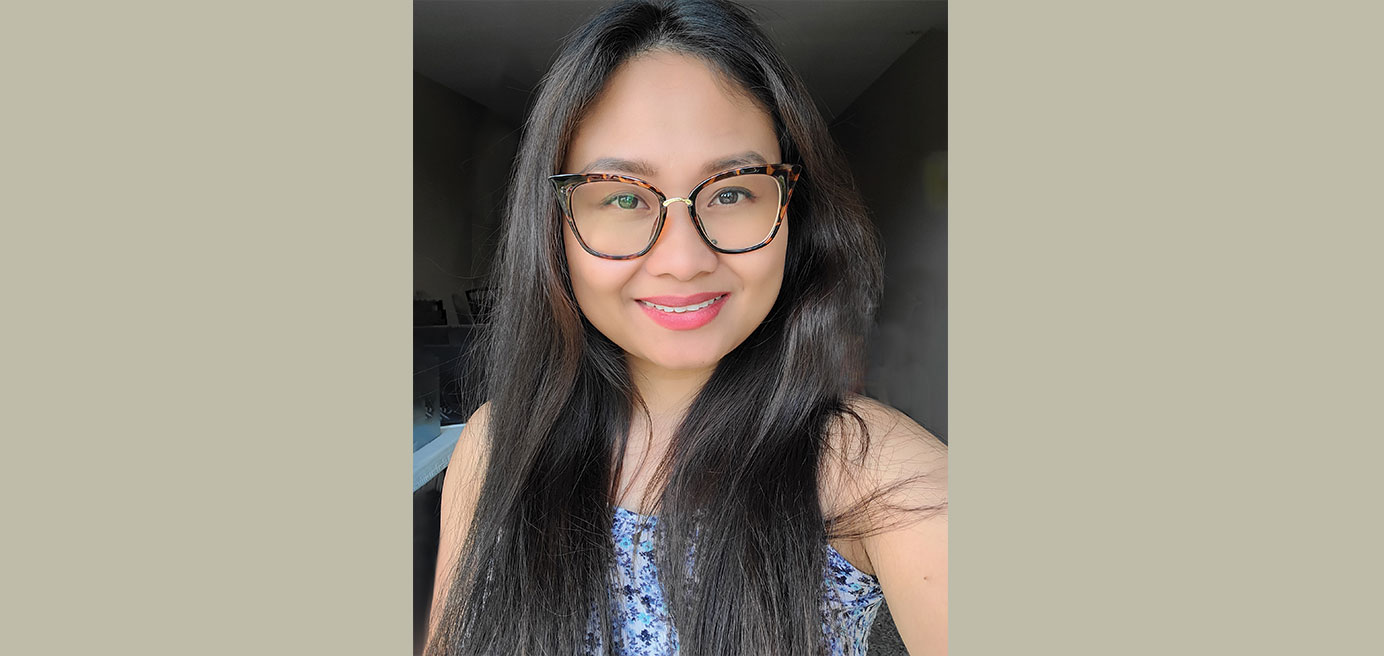 Born to Soar
Born to Soar

WEALTH OF KNOWLEDGE Jennie Arceno is one of the many Filipino nurses who have made BC their home.
If you try to visualize the arc of the journey between Jennie Arceno's birthplace and the location of her first nursing job in Canada using a well-known map app you'll see the following: Sorry, we could not calculate directions from "Palompon, Leyte, Philippines" to "100 Mile House, British Columbia."
The apologetic nature of the response tells you something about the impossibility of the journey. And, indeed, it might have seemed that way to a four-months pregnant Arceno when she boarded a plane for Canada's West Coast in 2016.
"As it turned out, my student visa was approved on the day I found out I was pregnant," Arceno notes wryly. "I spent the weeks before I left reassuring my parents that I would be okay and researching how to give birth in Canada." So close to fulfilling her dream, postponing the voyage was never even a consideration, she says.
But nursing was not a dream she had imagined pursuing when Arceno was a child. "I wanted to be a teacher because my mom was a teacher, and, anyway, I was so scared of blood," she explains. But when her friends decided to travel to Cebu City (the first capital city of the Philippines) to take the nursing entrance exam, she decided to do the same. "There was no nurse in the family – I would be the first."
Arceno graduated as a registered nurse in 2009, first returning home to volunteer at the local hospital before returning to Cebu City. It was there, at the university hospital, that she began to hone her craft working in med./surg., obstetrics, labour and delivery, and dialysis.
As her career flourished, Arceno began to critically reflect on the working conditions of nurses in the Philippines. "The staffing ratios weren't good, the wages were low, and I was frustrated with the way the hospital administrators viewed us as professionals," she notes. Arceno began to think about leaving. "I had heard stories about Filipino nurses in Canada and how they were paid and the idea of going there began to crystallize."
"My heart was broken. But I had to do this for my family."
- Jennie Arceno
Arceno arrived in Vancouver on a student visa. She then submitted an application with the National Nursing Assessment Service (NNAS) while enrolling in an LPN review program for internationally educated nurses (IENs) at a private college. She received her advisory report from NNAS in November of 2016. Her baby was one month old.
Following the report, Arceno was required to take a lab skills workshop and courses in critical thinking, leadership and jurisprudence. The next few months were a blur. "I wouldn't have been able to manage without the support of colleagues and friends while I cared for my child, studied and completed practice hours and adjusted to life in Canada."
In February 2017 Arceno briefly returned to the Philippines with her four-month-old. It was a bittersweet journey: the sweetness of seeing her family and partner and the bitterness of leaving her baby behind. "My heart was broken," Arceno recalls, "but I had to do this for my family." She returned to Canada alone. There was work to be done.
Arceno obtained her LPN licence in the fall of 2017. Now she needed to find a job. She remembers thinking that in order to be successful she would have to go to every health authority and apply to every small town hospital she could think of. She later received a call from a manager at 100 Mile House District Hospital. "They said, 'do you know where we are?' and I had to admit that I had no idea."
Arceno travelled by Greyhound, finding an apartment across the street from the hospital. Her first day on the job was also her child's first birthday. "I drowned myself in work," she recalls. But Arceno grew to love the place. "It's a small community and I was probably the only Filipino there at the beginning. You know everyone, and everyone knew my story."
Arceno's story is one shaped by an inner strength and a clarity of vision – of a life and what it can become if you are willing to take that first step – no matter how long or impossible the journey might seem.
Today, Arceno is a full-time registered nurse in Campbell River, where she lives with her partner and two children. Looking back to the day when she first departed Palompon for the west coast of Canada she can scarcely believe how far she has come. "It took more than three years, a bruised and broken heart, and over $30,000 to get my RN licence, but we are born to soar, and we have a wealth of knowledge and wisdom and resilience," she says. "IENs are very resourceful but we need the right mentors, the right support, and a chance to prove ourselves." •
UPDATE (Summer/Fall 2021)
THE COLONIAL ROOTS OF MIGRATION
Internationally educated Filipino nurses are the largest grouping of immigrant nurses in Canada and the US, comprising a substantial part of the nursing workforce. The historical forces behind this immigration are rooted in political, financial, and cultural factors still present to this day.
- In 1898, shortly after the Philippines became a US colony, the US set up nursing schools in the Philippines that taught an American curriculum in an effort to “civilize” the country. Graduates were required to demonstrate fluency in English to obtain a Philippine nursing licence. This educational system prepared Filipino nurses to work overseas.
- In 1948, two years following Philippine independence, the US created the Exchange Visitor Program granting foreign professionals permission to visit the US for two years to help spread American democracy across the world and fight Soviet propaganda. Many Filipino nurses, already trained in American-style nursing, came to the US. Some who completed the exchange program would migrate to Canada instead of returning to Asia.
- The 1965 Immigration and Nationality Act increased the number of foreign-born nurses, including those from the Philippines, immigrating to the US to join the nursing workforce.
- Canada’s Live-In Caregiver Program (LCP), introduced in 1992, was created to bring internationally educated workers to Canada to provide childcare, cleaning and home support for wealthy families. Under the guise of helping people from low-income countries gain citizenship, it creates a pool of highly skilled, yet low-wage workers to provide well-off families with their own private nurses and home support workers. The LCP allows temporary foreign workers to apply for permanent residency in Canada after completing a 24-month live-in requirement. Approximately 90 percent of LCP caregivers are women from the Philippines and the majority of these are college-educated in nursing.
- The low pay and poor working conditions experienced by nurses in countries like the Philippines has led to their migration to wealthier nations for financial stability, better working conditions, an improved standard of living, opportunities for career advancement and the ability to support family in the Philippines through remittances.
The recruitment of internationally educated nurses in Canada and the US is still prevalent today. It is critical to understand their personal experiences and the overarching systemic effects of migration.

